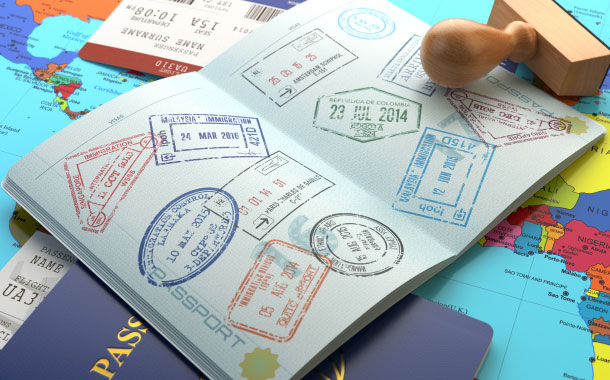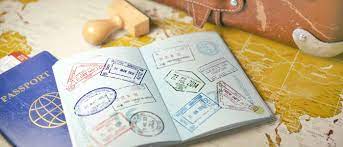India is a country of many surprises. From the sights, sounds, and smells to the traditions and culture, we can say that there is much more than meets the eye. But as much as it comes with its unique challenges too, travelling in India poses plenty of opportunities for travellers. India attracts millions of foreign tourists every year – both for business and leisure. India has a diverse range of tourist destinations spread across its states and further divided into smaller districts and villages.
Moreover, the country offers visa-free entry to almost all fellow Commonwealth countries except for South Africa, Nigeria, Pakistan and Afghanistan. In this article, we will highlight some lesser-known tips & tricks to help you get a visa to travel to India easily. These insights come from real-time field research with our VFS India team and reading countless articles online to get better at understanding Indian immigration laws and procedures.

Check if you can get an e-visa before applying for a visa from the Indian Embassy
India issues e-Visas via the Electronic Travel Authorization (eTA) system. You can apply for an eTA online at the website of the Indian Government eTA portal. It is important to note that you will only be able to apply for an e-visa for eligible countries if you have an eTA. The eTA does not allow you to apply for a visa in advance. However, you can apply for an eTA for India even if you already have an Indian visa. You can check if you can apply for an e-visa here. You will be able to enter India with an e-visa only. So, if you want to stay longer, you will have to apply for a regular visa at the Indian Embassy.
Don’t forget to carry your Confirmation of Receipt for your Visa Application
If you apply online for a visa, make sure you print and carry with you the Confirmation of Receipt (COD) that you will receive by email. This will prove that the visa application was submitted online. The COD will also have the application number, which is the only number that you will need to provide at the Indian Embassy. If you apply for a visa at a local Indian Embassy, make sure you hand over the printout of the application to the Indian Embassy staff as well. This will help you in confirming your application and also make sure that you are not missing out on any important documents. The Indian Embassy and Consulates will send you an email when your visa has been received and is being processed. The Embassy or Consulate will inform you if there is any change in the status of your application. If you receive an email from the Embassy or Consulate that your visa is not ready, don’t worry. The Embassy or Consulate will inform you of what documents you will have to provide them and how to collect the visa.
Make sure that the purpose of your trip is listed in your visa application
If you are applying for a business trip, make sure you have listed the purpose of your trip in your visa application. It is important to note that the purpose of your trip should be included in your visa application. Otherwise, you may get caught by immigration officers even at the airport. The purpose of your trip should be mentioned in the following format – ‘For purposes of business.’ If you are applying for a pleasure trip, the purpose of your trip should be ‘For personal/leisure purposes.’ The immigration officers may not let you enter the country if the purpose of your trip is not mentioned accordingly.
Apply for a multiple-entry visa, not a transit or single-entry visa
If you are applying for a business trip and want to stay in India for a longer period, you should apply for a multiple-entry visa. This will allow you to apply for a new visa at the Indian Embassy whenever you wish to return to your home country. A multiple-entry visa allows you to enter India multiple times during a single period of stay at the Indian Embassy. Single-entry and transit visas are valid for a single entry at the Indian Embassy and are not valid for multiple entries at the Indian Embassy. If you are applying for a pleasure trip and want to stay for an extended period, you should apply for a multiple-entry visa. This will allow you to apply for a new visa at the Indian Embassy whenever you wish to return to your home country. A multiple-entry visa allows you to enter India multiple times during a single period of stay at the Indian Embassy.
Do carry copies of your relevant documents and keep a digital copy with you while travelling in India
Before you head out on your journey to India, make sure you have copies of all the documents that are required for your visa application. The original documents should be kept safely at home in a secure place. Make sure you have copies of all your passport-sized photos and all relevant documents like your passport, your visa application form, and your hotel reservation details. Make sure you have a digital copy of all the documents as well. This will help you in case anything happens to the originals while you are travelling. While in India, make sure you have copies of your visa in your passport. If something happens while you are in India, you will be able to make your way back to the Indian Embassy and make your application for a new visa.
Final Words
To sum up, remember that the visa process in India is highly complicated and requires a lot of patience. You will have to spend a lot of time on your visa application and filling up the required documents. You will also have to make sure that your trip to India has a purpose and is business-related. If you follow these tips and tricks, you should have no problem getting a visa to travel to India.










